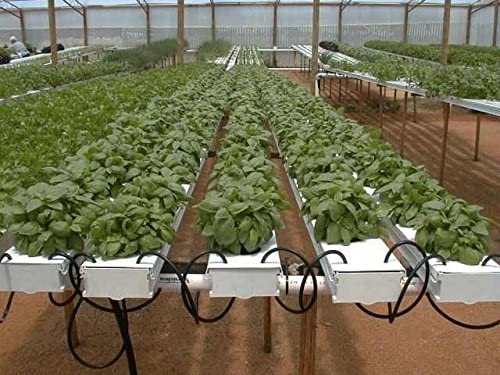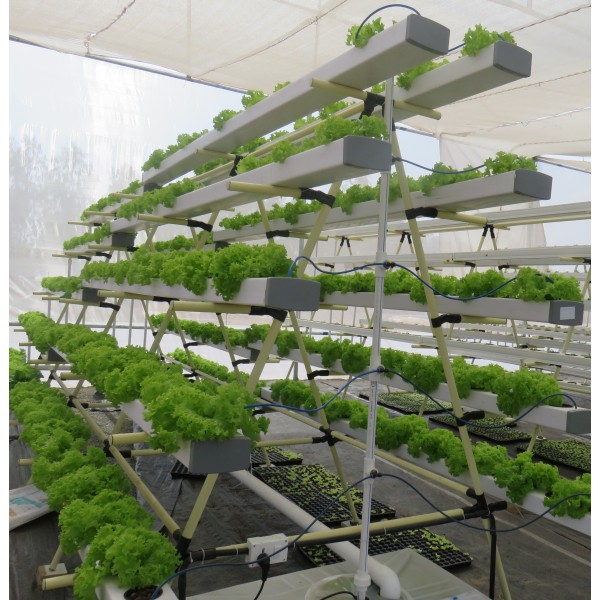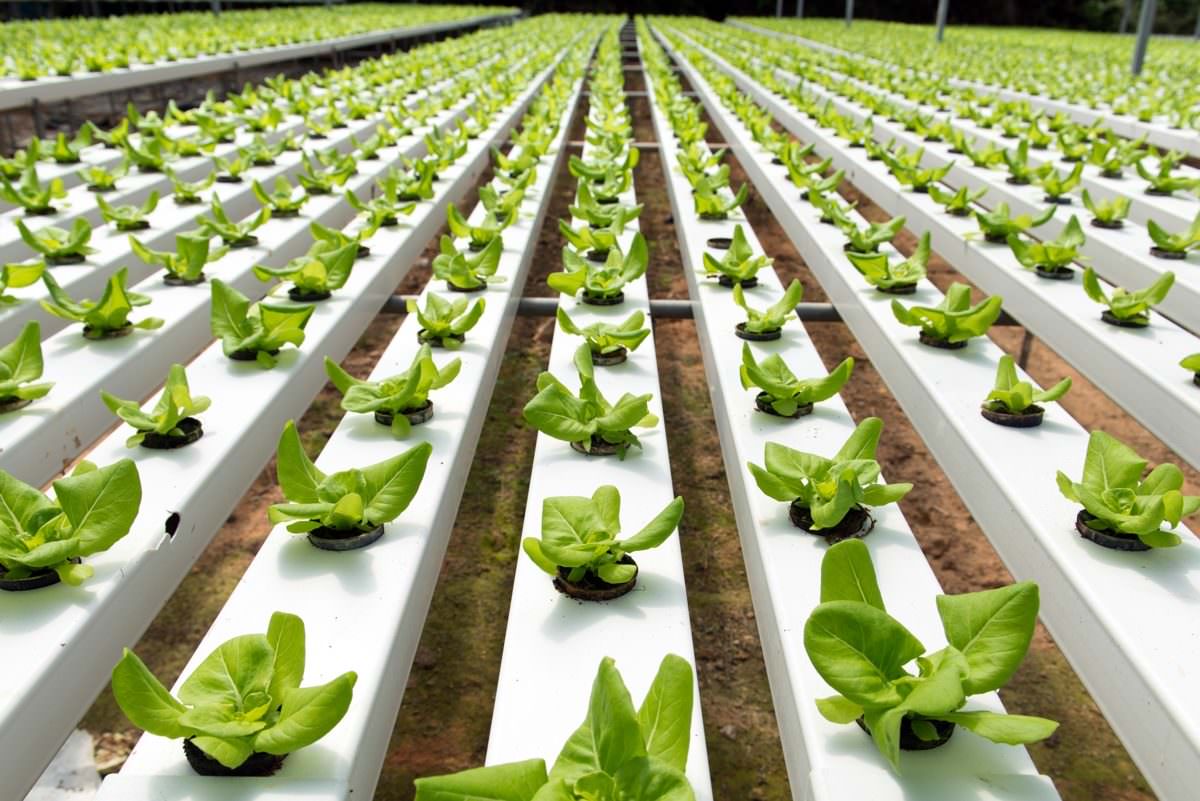With the accelerated depletion of soil fertility and productive land availability, there comes shortage of available agricultural produce to feed the growing population. What could be the possible solution? Emerging problems require smart and feasible solutions and in here one could go for the novel method of growing crops in water smart solution, namely ‘Hydroponics’. Now the question arises what is hydroponics? It is The future of crop cultivation in which hydroponic system utilizes the power of water to grow food where, there comes no need of soil for the age old practice of farming as in case of traditional cultivation.
Hydroponics can be defined as ‘Growing plants in water smart solutions in place of soil, meaning: soil-less cultivation of plants’. Here, soil does not serve as an anchor to the plants; the roots are brought in direct contact with the nutrient medium. The plants are provided with enormous oxygen in order to fasten the growth of the plants. And this characteristic of hydroponics, that is, quick growth of plants serves as the most remarkable benefit for adoption. This cultivation offers various other advantages over the traditional method which are as follows.
- Uses scientific and calculated methods for growing crops.
- Considers the specific requirements of single plant.
- Controls the nutrition profile of the plant.
- Eliminates use of pesticides.
- Hydroponic farms are located near large cities, providing the consumers with fresh produce.
- Eliminates all soil-borne pests due to its characteristic of soil-less nature
- Use of high quality, pre-treated purified water, the produce is safe for consumption in every single way.
- Offers completely residue-free produce to the consumers.
There are various types of hydroponics systems available based on ease of setting-up, of which seven are commonly used commercially. These systems are:
1. Wick System
Wick system remains the simplest system of hydroponic production technology that can be used to grow plants; it can be practically used by anyone. The wick system eliminates the use of aerators, pumps, or electricity. It can be said that it is the only hydroponic system that doesn’t require the use of electricity. The plants are placed directly in an absorbent substance such as perlite, vermiculite etc. Nylon wicks are used to cover the plant before being sent into the nutrient solution. This system is best for small garden plants and herbs. Plants requiring comparatively less water requirement is grown using this system.
2. Deep Water Culture
Deep water culture system is a simple hydroponic system that places the plant directly in the nutrient solution. This system makes use of diffuser or air stone to pump oxygen into the nutrient medium.
The best part of this system is that the plant roots are directly in touch with the nutrient medium making easy absorption of nutrients by the plants resulting in quick growth. The system is suitable for any kind of plant irrespective of their size.
3. Recirculating Deep Water System
Recirculating deep water system covers the shortcomings of the traditional or normal system. This system doesn’t drain out the nutrient solution, meaning , the solution keeps on circulating throughout the structure. Buckets or containers used are linked to a large central reservoir and the nutrient media is circulated from one bucket to another. The system requires simple addition of water, oxygen followed by calibration of the reservoir.
4. N.F.T. (Nutrient Film Technology)
NFT is the widely used measurable method of hydroponics system and it consist of tubes of channels arranged side by side in rows.It includes a large central reservoir containing nutrient solution from where the contents are pumped into slightly slanted channels. This helps in the flow back of excess solution into the reservoir. The nutrient solution flows over the roots of each plant, thereby providing required amount of nutrients.
The system is usually used in the cultivation of lettuce and it gives best results for light-weight, fast growing crops.
- Flat Bed NFT System

In this type of NFT, the channel is placed parallel to each other with same elevation from the ground.
- A Frame System

In this type, the channels are arranged in a structure resembling ‘A’ where plants are placed in channels one upon the other. This system accommodates more plants than flat bed type at same space.
5. Ebb and Flow (Flood and Drain)
The Ebb and Flow system is mostly used for home gardens. Here, the plants are kept in large grow beds made of growth medium like rockwool or perlite. After planting, the grow bed is flooded with nutrient-rich solution till the solution reaches a few inches below the top layer of bed preventing the overflow of the solution.
The water pump is fitted with a timer which ensures switching on and off of the pump at regular intervals. After flooding the bed with nutrient solution, the water is
drained out from the bed reverting it back into the pump. This system is applicable to almost all types of crops including root crops.
6. Drip Systems
Drip systems are highly effective and easy-to-use hydroponic systems that are capable of making alterations suiting different types of plants. Here, the nutrient media is circulated to a drip system and is pumped into a tube which directs the solution to the plant base. A drip emitter placed at the end of each tube which controls the amount of solution supplied to the plant. The flow of the solution can be adjusted according to individual plant requirements.
Drip systems can be of circulating or re-circulating type. Circulating systems drip almost constantly and extra solution will be sent back into the reservoir. Due to possibility of alteration, these systems are used to grow any plant.
7. Dutch Bucket System
In Dutch Bucket system, plants are lined in a row placed in buckets with 1-2plants in one bucket. Drip hoses connected to the water line which runs throughout the length of the system from the water pump are placed at each plant using drip emitters, creating a constant drip.
The system is especially useful for the cultivation of vine plants as well as large plants.
8. Vertical Hydroponic System
Here, the plants are grown in stacks or towers. A single tower can easily hold dozens of plants, stacked one on top of the other, and all being fed nutrients through the same system. In this method farms take up 99% less land, making them easier fit in greenhouses.
In vertical hydroponic systems up to 90 percent water is saved effectively. The closed system prevents draining and indoor cultivation in greenhouses can reduce pests, diseases, and issues related to fickle weather. The system could use natural light or LED lights in a greenhouse.
Conclusion
The technology of Hydroponics put forward a bright The future for crop cultivation which at present, is facing various challenges including pest resurgence, pesticide resistance, poor soil fertility, desertification, unavailability of water for irrigation and degraded arable land. The most notable problem faced by the farming community is the ever changing and unpredictable weather. Taking all these concerns into account, the all in one solution remains the adoption of hydroponics since the crops in here are grown in controlled, soil- less environment eliminating the chances of climatic challenges, pest attack (soil-borne) and unavailability of land. The technology could also reduce the incidences of soil and water pollution to a large extend. This system also is proven to be highly efficient in saving water, thus giving new dimensions to farming, revolutionizing the conventional ideology of agriculture.

